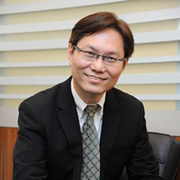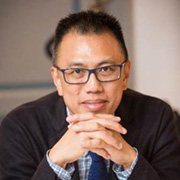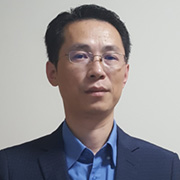(The opinions and views expressed by the participants in this article are their own and do not represent the views of their organizations.)
Published 22 June 2020
Alex
Climate change disruptions, emerging technologies and social shifts, and the recent COVID-19 issue have created a world that’s never been more vulnerable. Seventy percent of cities are experiencing the effects of climate change. Cities are also facing changes to the social fabric. From an aging global population that is expected to double by 2050, to the refugee crisis that has displaced over 25.9 million people, cities are bombarded with demographic changes that require quick response and effective mitigation.
Given such pressing challenges, city planners must perform their roles as global leaders and address these issues strategically and collaboratively. With a global urban population predicted to reach 68% of the total world population by 2050, city leaders have greater responsibilities to manage and respond to today’s disruptions. They may have resources, knowledge and wealth that equip them to provide unique and transformative policies tailored to the demands of each city. Cities, therefore, play an indispensable role in moving society toward a more resilient future. How can cities prepare for the future with greater confidence?
Alex
Can you describe some ongoing smart city initiatives taken by governments that address these challenges?
Theo
I think the concept of a smart city is misleading. We're seeing more smart precincts, within a city, where residents can work, find entertainment and shop without leaving the precinct. And we're seeing an escalation in focus around the local integrated and connected community ecosystems. A successful city is a city that serves the community the best and should be measured by the total quality of life it creates or enables for the community. We are facing a huge challenge around an aging population. For example, we are working on a smart precinct that has a wellness focus and is designed to enable and teach people to enjoy quality of life beyond 50. The entire precinct is designed for senior living.
Alex
That’s an interesting, broadened definition of smart city. Colin, as a consultant, you have been all over the world and have seen many examples. What’s a good model that you think we should use for city planning?
Colin
Typically, Singapore, Amsterdam, and Estonia would feature in the top 5, top 10. But there's no single definition of what a smart city is. For example, can a smart city be a decentralized smart city? It needs to be localized to the context. Another type is the distributed smart city, which is more than just the government — other stakeholders, like the community, startups, and corporations can also lead in the development of smart cities. For example, China has many very innovative smart city features, like digital payments, led by their tech companies, which they're doing outside of government.
Alex
Teck Leong, as a planner for Singapore, can you suggest another city that you think we should follow and copy?
Teck Leong
I personally like the way Japan has developed their cities. Although Japan is a smart and technologically advanced country, their development model is very human-centric, where they try to make every city, district, town, and neighborhood very livable, compact, organic, walkable, clean and green, and accessible by public transport. Within Tokyo, they have created multiple poly-centers that are tightly integrated with the rail network and train stations so that people can live, work, and play in one location without the need for unnecessary commutes.
Singapore is doing something similar where, instead of concentrating all our economic activities in the city center, we decentralize them by creating regional centers around major MRT stations and interchanges in different parts of Singapore. The whole idea is to create a place where employment opportunities; housing; and amenities such as schools, shops, hospitals, recreational and community facilities, and parks can all be found in one place. We want to make sure all the regional centers that we are creating are just as attractive as the Central Business District (CBD) so that people and companies would be more willing to work and set up their operations outside of the city center.
Theo
What Singapore has done very well is the design of their transportation ecosystem. Because transportation is affordable compared to other major cities, it allows for a strict policy around the number of vehicles on the road. This alleviates congestion and reduces emissions without penalizing the majority of the community. These types of underlying infrastructures are crucial if you're going to create a decentralized plan and still allow every person in the community the ability to utilize all the facilities, enabling quality of life for the entire community.
Alex
As a city planner, what are the key things you look for when you want to improve the quality of life?
Teck Leong
People do not choose to work and live in a particular city or district because it is smart and packed with fanciful gadgets. They do so because the city or district is attractive, vibrant, and livable, and caters to human needs. People gravitate toward places that have good parks and recreational amenities; exciting entertainment; retail, food and beverage, and cultural offerings; good quality but affordable housing; a well-connected public transport network; good jobs; and schools for their kids. They also want access to fast and reliable ICT connectivity to meet their business and personal needs.
Theo
For Hitachi, the key word is people. At the end of the day, we develop products for the people, with the aim of creating happiness and quality of life for the people. We are seeing a convergence from Industry 4.0 to Society 5.0. In the past, industry use to drive the direction of product development. We have now seen a global business paradigm shift to a consumption economy, driven by consumers. The ability for consumers to demonstrate and communicate their needs becomes prime in everything we do, including how we build cities, communities, and precincts.
Alex
Planning smart cities and smart precincts involves new development, replacing old infrastructure, and adding smart technologies into existing infrastructure. The most common issue plaguing these initiatives is financing. If governments are the only entities willing to pay for such development, how can new developments be financed? This is especially difficult in developing countries.
Colin
I don't think you can take away the role of government at the end of the day. Government is still very important, but I think the real world is such that you can't only depend on government. Because whether it's in India or other places, a lot of things happen in spite of government rather than because of it.
Wujuan
We need to understand the motivating factors for smart cities. Some cities focus on sustainable development because of a shortage of natural resources, some cities want to improve the efficiency of their industries due to a decline in their workforce, while other cities may aim to provide more convenient services to the citizens. Depending on the different motivators, smart cities may face different challenges, and governments may play different roles to accelerate the journey towards a smart city.
Theo
We also need to see the cost of living, cost of livability, which means transportation, food, housing, and so on — how technology could help to reduce the cost of living.
Colin
One of the key criteria in the various annual rankings of the world’s most livable cities is the time spent commuting from home to office and back. Price is important, but the congestion level is more so. I visited Silicon Valley a few months ago, and the traffic from San Francisco to Palo Alto is crazy. It’s not a livable place for me. With only a few exceptions (such as Singapore), the top cities in the lists for smart cities and livable cities tend to be different. We should reflect on why there is this difference.
Wujuan
Now we come to city planning and transportation planning. How could the two be integrated?
Teck Leong
City planning and transport planning are closely related. To attract people to work and live in a particular area, transport infrastructure will need to be implemented in a timely manner in tandem with the pace of development. The area will need to be well served by road, rail and other public transport that can get people in and out of the district quickly and conveniently. To enable intra-district movements, other modes of transportation such as bus shuttles and cycling will also need to be planned for and provided.
Alex
Technology has always been considered an enabler as well as a disruptor. What technologies in the near term have the potential to contribute positively to smart city enablement?
Wujuan
I think we will see driverless automobiles and air taxis, robotics, 3D printers and mixed realities that bring physical and cyber systems together for better decision-making. Apart from individual technology itself, smart cities will be about the connectivity of things. Enabling pervasive data sensing and making the data from different infrastructures available is the first step. Obtaining better insight from such multidimensional data and having everything connected is the next. AI will play a very important role, but the decision-makers need to understand why AI made its recommendations. We still need humans in the loop. Human expertise will leverage AI technology, helping to make better decisions.
Theo
5G technology is the underlying key that is going to unlock device-to-device communication, which will unlock a range of emerging technologies like autonomous vehicles. As device-to-device communication accelerates, we will see AI becoming more mainstream. We are going to see new industries come to life, as well as the complete transformation of current industries. An example would be that within the next three years, we will see AI take over most of the procurement in all major manufacturing industries.
Teck Leong
Technologies such as data analytics, machine learning/AI can help to provide invaluable insights on how cities function and help us plan better. However, we ultimately still need professional judgement, sound planning principles and the human touch. These will enable us to appreciate the results produced by these technological tools so that the right policies and interventions are put in place to improve those areas that are found wanting.
Personally, I feel that people have a tendency to be overly enamored with technologies that are advocated by certain high-profile entrepreneurs and venture funds. Very often, many of these technologies are one-dimensional or solutions in search of a problem. As city planners, we need to be more broad-based and balanced to take into consideration how these technological innovations impact different stakeholders and whether they actually create real value as well as unintended consequences. Instead of focusing on technologies, I would prefer to focus on the outcomes that we want to achieve before we look at what solutions can best address the problems that we want to solve in the most cost-effective manner.
Alex
Yes, technology does play a part in all these things. And eventually it comes down to trust — whether we trust the authority enough, whether we trust the technology enough, and with that trust I think they can work better.
Alex
Creating smart cities is an enormous undertaking, involving many stakeholders and constituents. Is there a “passive and uninvolved community” that the city government should deepen their engagement with and mobilize to support new initiatives?
Teck Leong
I think it is very important that any smart city plan is not seen as a purely government-led initiative but one that is owned by the different stakeholders in the community. It also should not be about the adoption of technologies for their own sake but how they can help to create good jobs and better opportunities and experiences for everyone in the district. People and businesses must be able to see value in them.
Alex
What do you think are the new business models that can eventually power the creation of a better smart city?
Theo
What we have seen is the acceleration of the as-a-service model. For example, a corporation can propose to a city that it will erect a series of lampposts for the facilitation of 5G and any additional digital service needed, enabling a 5G network across the city. The government needs to facilitate or enable the corridor or the footprint for the lampposts. The corporation will invest the capital for the entire project but will have the ability to generate revenue from the lampposts. In some cases, the corporation will even share the revenue from those lampposts with the government. So, the corporation owns and manages the lampposts until it has recouped its investment, and then it will transfer the asset to the government.
This model enables governments to accelerate the rollout of smart services, improving the quality of life (QoL) for the community without the capital expenditure on the front end. To enable these types of models, we will need to see a shift in government policies where public-private partnerships (PPP) become more mainstream. One of the most successful governments around the world utilizing the PPP model has been Australia. The next shift we will see is infrastructure as a service, utilizing the same principles.
Teck Leong
Although smart, integrated urban solutions can help to improve the overall sustainability performance of a district and all the buildings within it, convincing building owners and households to use them is not easy. These individuals are worried about how much they would need to pay for these services and whether they would be “held captive” to them once they have signed on to them.
Going forward, tech companies will need to go beyond selling smart urban solutions and technologies to city governments and expecting them to help push for their adoption. They’ll need to clearly demonstrate and quantify the benefits from a sustainability perspective, and focus on developing sound, market-oriented business and operating models that make economic sense to both the providers and the end users. Tech companies must be prepared to take on more risks by considering investing in and operating these systems, without direct government intervention so that the onus is on the tech companies to convince the market of their benefits.
Theo
Government will have to change the way it looks to the future. We are still seeing a very traditional procurement mindset out there, which is slow compared to the acceleration of change. What we are seeing around the world is a tremendous budget shortfall, especially around infrastructure. So, we need to engage corporate entities to help us deliver, without that slow procurement and traditional methodology. Corporate consortiums can deliver the needed infrastructure components, and we can get there much more quickly. Some governments are still struggling to make the adjustment.
Alex
Are there any other stakeholders that the smart city should be engaging to help realize its vision? We talked about corporations and government, but who else should be actively engaged?
Theo
The underlying success of any smart city lies with the citizens. Anybody who is not taking people and the community into account will most likely fail in the long run. The successful smart cities are already being built by a successful partnership between good consortiums, visionary governments and an engaged community.
Colin
Trust is a fundamental building block of smart cities. Who do you want to trust? Maybe, for a big corporation, you’ll need to go back to the community. You can start building alliances with community groups using technology, using your multinational corporation perspective, and bring them to a certain level where you have credibility, and then use them to move your smart city agenda forward.
Alex
Tech companies like Hitachi have been working on smart city initiatives for years. How will they contribute to the success of smart cities in the years to come?
Theo
We've seen the biggest successes around the major pressure points: power, energy, security. Hitachi has done some very creative stuff around water desalination and power generation. In the last five years, we’ve seen the shift to the consumption economy, and we understand that the consumer is key to creating game-changing technologies. So now the focus is on how we can connect to the consumer. I believe that whoever touches the citizen and can influence the quality of life will be successful.
Alex
That’s a key insight in terms of how Hitachi views the future. And I think the strategy is already working and is something that we have all learned together. How can we bring all the stakeholders together as a community to solve these issues?
Wujuan
We often face the issue that technology must be proven before government can purchase it. Testing smart city technologies at a district level is a way to build trust in the technologies and solutions. Smart districts will provide a platform for different stakeholders to co-create technologies and demonstrate how the technologies can be integrated and work together. We hope that governments can have more smart district initiatives and an overall strategy, including incentive schemes, to build the co-innovation community.
Theo
We’re starting to see a shift in governments with visionary leadership. They are starting to say, “We need a problem solved. Can you form a consortium of companies that can bring us the answer and deliver it in a partnership with government?” Most of the time, the solution will need to solve the capital requirement to deliver the project. These are the types of long-term opportunities and challenges that Hitachi and our partners are looking for.
(As at the time of publication)

Alex LIN, Ph.D.
Deputy CEO of NTUitive and Board Director of Action Community for Entrepreneurship (ACE)
Alex Lin is an innovation ecosystem builder, who helped build startup and innovation ecosystems in various countries. He is currently the interim CEO of NTUitive. Alex was formerly the head of a USD200 million government venture fund under Infocomm Development Authority (IDA). Since 2014, he has funded more than 380 start-ups and accelerated more than 170 start-ups to series-A. This massive effort boosted Singapore’s tech start-up ecosystem from a ranking of 17th place to 10th place within two years, and contributed to the vibrant start-up nation everyone now enjoys.

Teck Leong LIM
Director, Physical Planning Group, Urban Redevelopment Authority
Teck Leong Lim works for the Urban Redevelopment Authority of Singapore and oversees land use planning and development issues in western Singapore. He is currently leading the master planning and development of Jurong Lake District into a world-class, sustainable, mixed-use district, and the largest commercial center outside the CBD. He has participated in the reviews of Singapore’s strategic and medium-term land use plans and policies, focusing on industrial, port, rail and infrastructure uses, underground space planning, and smart and sustainable development. Prior to his appointment in the physical planning group, Teck Leong was involved in the planning and implementation of infrastructure works in various parts of Singapore, including Marina Bay, to support government land sales.

Colin LIM
Smart City/Mobility Consultant, Former CEO of mobilityX
Colin Lim is a versatile leader with a proven track record of initiating and implementing change. He founded and led "mobility as a service" for start-up, mobilityX; held key appointments in the Singapore Ministry of Transport; Ministry of Home Affairs and Land Transport Authority; Singapore public transport company, SMRT; and multinational corporation, IBM. Colin has contributed to numerous global initiatives, as well as long-term strategies for Singapore. He specializes in innovation, mobility, strategy, and public policy/regulation.

Theo SCHERMAN
Chief Strategy Officer, Hitachi Asia Ltd.
As Hitachi APAC chief strategy officer, Theo Scherman provides thought leadership in key industry segments, defines solution road maps aligned to those industries, researches and develops strategies that will enable Hitachi to use its knowledge and powerhouse innovation to transform outcomes for governments, partners, and clients. Prior to joining Hitachi, Theo was CEO of Eduss Broadcast & Media Inc. He has more than 24 years of experience and expertise in leading edge businesses, from the IT era into the IoT as a thought leader in the global digital transformation step-change, both regional and international.

Wujuan LIN, Ph.D.
Deputy General Manager, Research & Development Center, Hitachi Asia Ltd.
Wujuan Lin heads the Digital Solution Group, Research & Development Center at Hitachi Asia Ltd. He is responsible for the creation of social innovation across ASEAN countries. His current work covers technology and solution development in various sectors, including building management, public safety, mobility, manufacturing and logistics, and finance.
Wujuan received his doctoral degree in electrical and computer engineering from National University of Singapore. He has over 20 patents and has authored 15 technical publications.